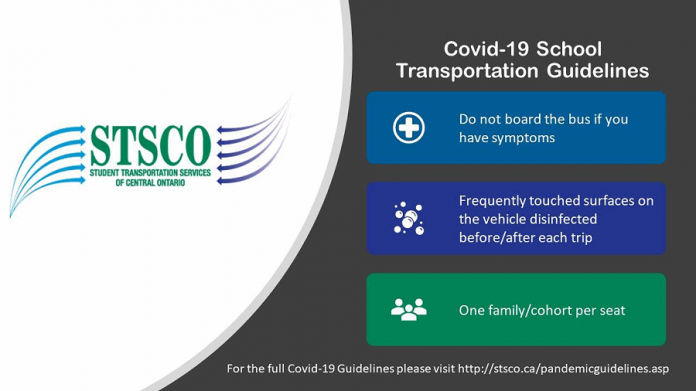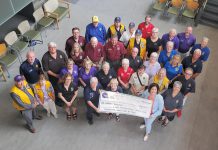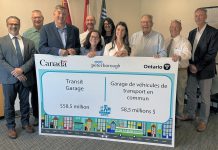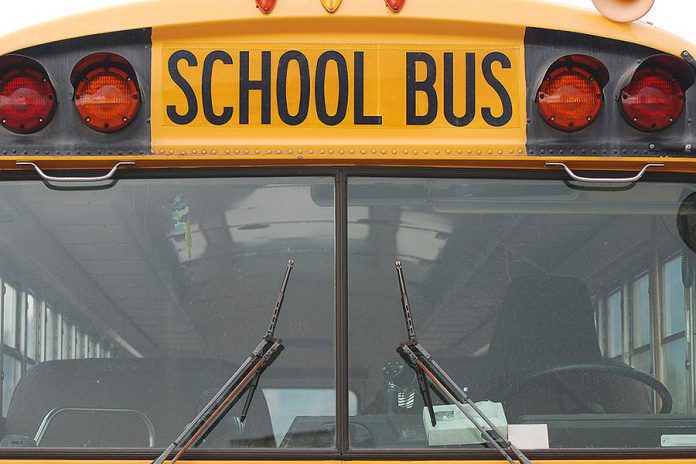With the first day of school during the COVID-19 pandemic fast approaching, many parents continue to have concerns about the safety of their children — not only while at school but while getting there.
School bus drivers also have concerns about their own safety. According to the Bus Carriers Federation, the average age of school bus drivers is 55 years old, putting them at increased risk of hospitalization if they contract COVID-19.
The concerns have been heightened as the Ontario government, in its guide to reopening Ontario’s schools, states that school boards “may be required to increase the utilization of buses beyond one student per seat and operate closer to capacity”. The government also states that, while face masks are mandatory on school buses for students in Grades 4 to 12, they are optional for students in Kindergarten to Grade 3.
On Tuesday (August 11), the Student Transportation Services of Central Ontario (STSCO) — which serves the Kawartha Pine Ridge District School Board, the Peterborough Northumberland Victoria and Clarington School Board, and the MonAvenir Catholic School Board — released a set of COVID-19 student transportation guidelines for parents.
The Trillium Lakelands District School Board (TLDSB) — which provides transportation for students in the City of Kawartha Lakes, County of Haliburton, and District of Muskoka — is in the process of updating its return-to-school plan. The board has asked parents to re-register their children for in-school or at-home remote learning for September and to indicate whether their child, if eligible, will be taking bus transportation to and from school. Re-registration closes on Thursday (August 13).
Once TLDSB has received numbers it will be update its return-to-school plan, which will include information about transportation safety protocols. TLDSB says families will receive information about how to access the return-to-school plan before the start of the school year.

STSCO, which provides transportation for over 26,000 elementary and secondary school students at 120 schools using more than 750 vehicles, developed its pandemic guidelines according to Ontario government and public health recommendations.
The STSCO guidelines cover cleaning of vehicles, non-medical face coverings for students, physical distancing at bus stops, screening of students, loading of students, seating plans, allowed items on a school bus, emergency situations, and special needs transportation. The guidelines are summarized below:
Cleaning of Vehicles
All high-touch surfaces on school buses will be cleaned with a disinfectant prior to the start of each bus run, including seat cushions, the top of seats, handrail, seatbelts, and driver controls.
The type of disinfectant used will be in accordance with public health recommendations.
Personal Protective Equipment (PPE)
STSCO recommends students wash their hands thoroughly with soap and water for 20 seconds (or use an alcohol-based hand sanitizer) before and after each trip on the bus.
Parents are asked to supply children in Grade 4 and above with a non-medical face covering.
A supply of masks will be available on each bus for students who do not have one, or for a parent who needs to to board the bus to help with a seatbelt.
Bus Stops
STSCO recommends students and their parents maintain a two-metre distance from others while waiting at a bus stop.
Students must follow the direction of the driver when boarding the bus.
Students who have symptoms associated with COVID-19 or think they have been exposed to COVID-19 will not be allowed to take transportation. Parents must screen their child for any symptoms prior to sending them to board the bus.
If a student at a bus stop is displaying symptoms such as coughing, fever, or other obvious signs of an illness, they will not be allowed to board the bus.
If the child’s parent or guardian is at the bus stop, the bus driver will advise them the child cannot board the bus. If there is no parent or guardian with the child, the driver will contact dispatch to advise the family that the child cannot be transported.
If a child exhibits symptoms of illness before boarding a bus after school, they will also not be allowed to board the bus.
Loading of Students
The number of students allowed on a bus will be limited to one family per bench seat, with a maximum of three children from the same family on the same seat. Students from single-child families, or students from the same household who are not related, will be grouped together where possible.
Students must follow the bus driver’s instructions and sit in the seat assigned to them. Students will not be allowed to change seats at any time during the bus trip.
All students will load from the back of the bus to the front of the bus when being picked up, and vice versa when being dropped off. This will limit close contact between students on the bus.
STSCO encourages students to walk to their bus seat without touching other seats.
Seating Plans
Seat assignments for students will be mandatory and must be followed by the bus driver and enforced by the school principal.
The front two seats will remain empty and be used for emergency purposes only where possible.
Bus drivers will maintain a daily log of which students rode the bus for any trip for contact-tracing purposes.
Items on a Vehicle
Students will not be allowed to bring large items on the bus that would not ordinarily fit inside a knapsack.
There will be no waste containers on the bus.
As always, food or drink is not permitted on a school bus.
Emergency Situations
In an emergency situation where a student on the bus requires assistance, the bus driver will radio dispatch for clear direction.
If a student requires immediate attention, the bus driver will park the vehicle in a safe location and turn the vehicle off, be certain to keep their PPE on, and attend to the student, calling 911 if necessary.
In the case of major issues such as vomiting, bleeding, or showing symptoms of COVID-19, the bus driver will pull over and inform radio dispatch to send another bus. The parent or guardian of the student will be instructed to meet the bus to pick up the student in question.
If the bus driver must provide immediate assistance to the student, the driver will wear additional PPE such as eye protection, face shields, and gloves. The bus will then be returned to the bus yard for thorough cleaning prior to being put back into service.
Special Needs Transportation
In situations where parents, guardians, or school staff need to board a bus to assist with the student’s seat belt, harness, or car seat, they must wear a mask and eye protection (shield) when boarding the vehicle.
Upon boarding the vehicle, prior to touching anything, they must sanitize their hands (hand sanitizer will be available on the bus).
The bus driver will remind them to not touch anything on the bus except the student’s seat belt, harness, or car seat.
This story has been updated with information provided by the Trillium Lakelands District School Board about its return-to-school plan, including student transportation safety protocols.



























